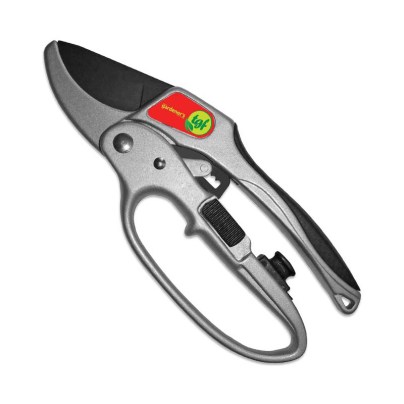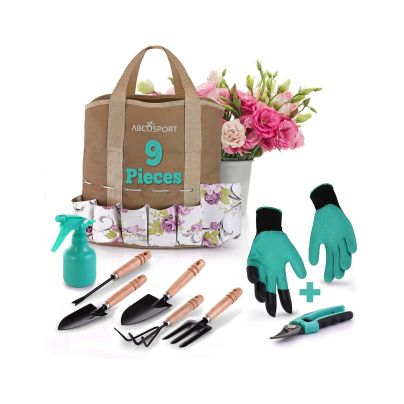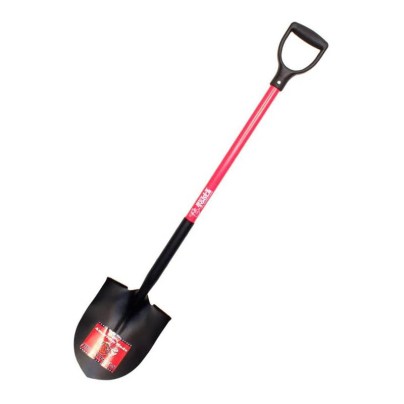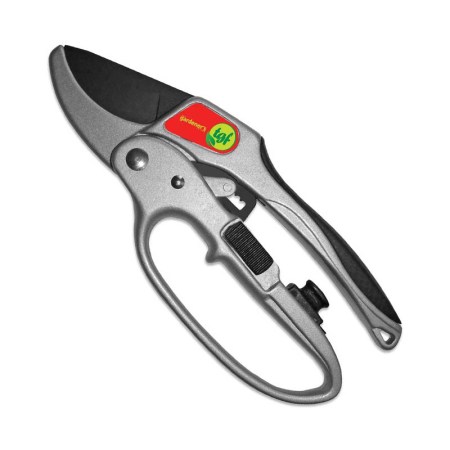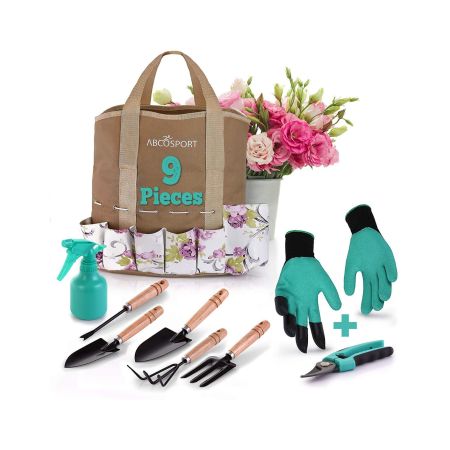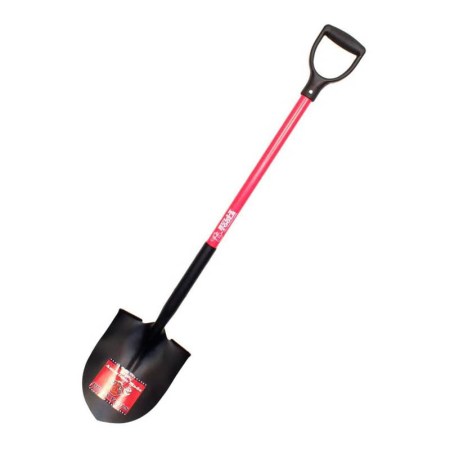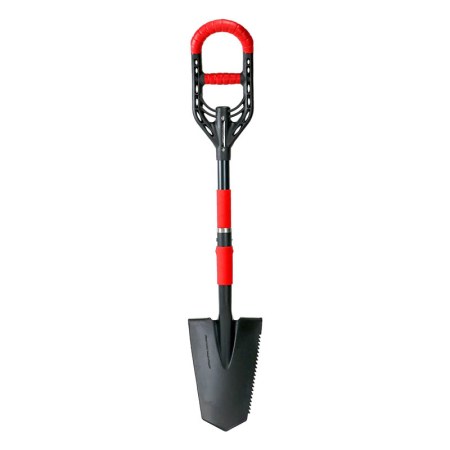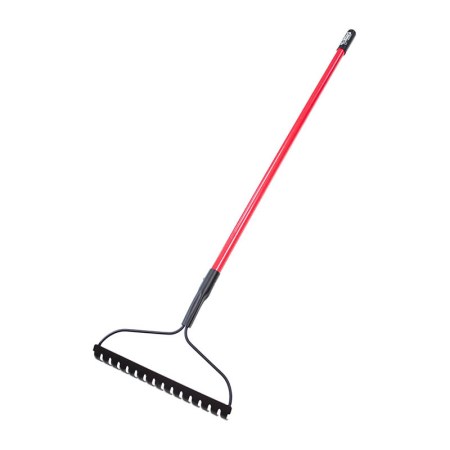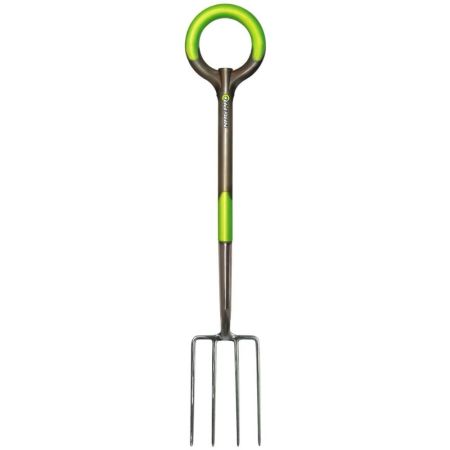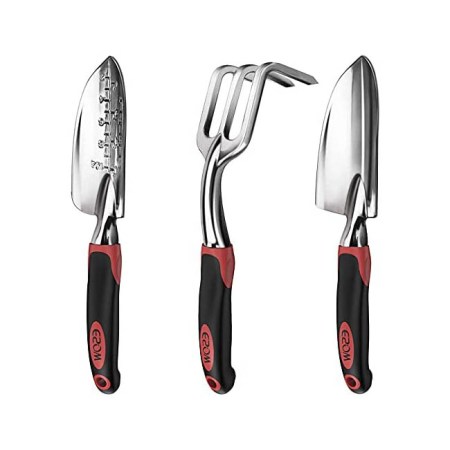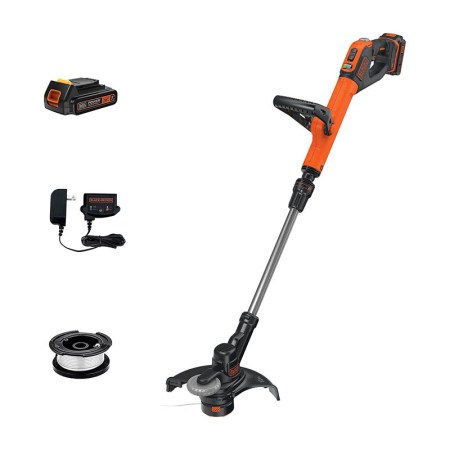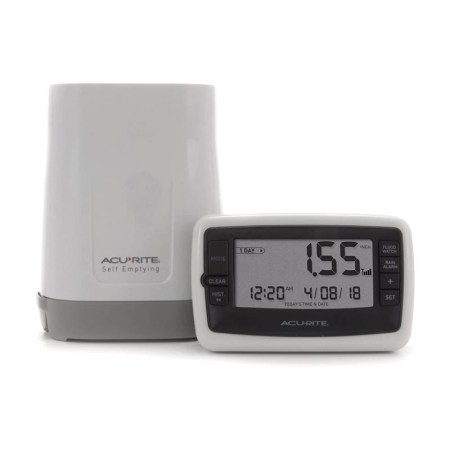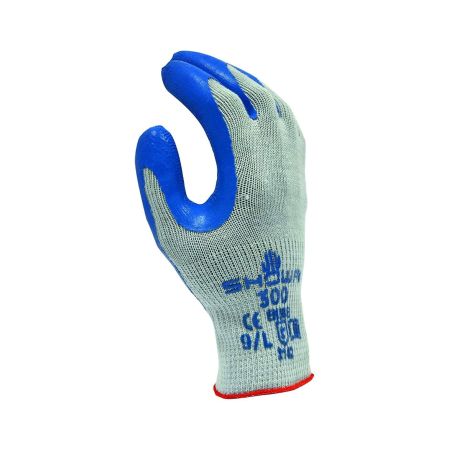We may earn revenue from the products available on this page and participate in affiliate programs. Learn More ›
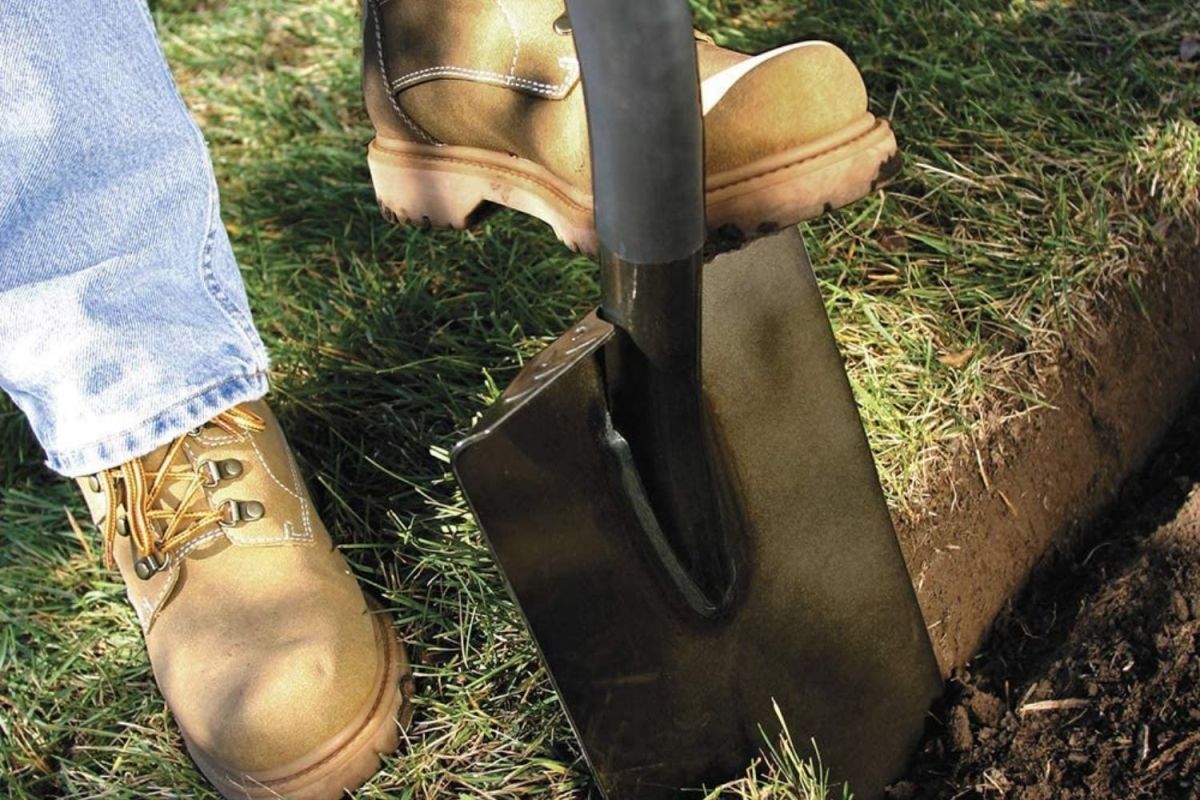
From perennial flower beds to privacy hedges, backyard landscapes require regular upkeep. Opt for dedicated gardening tools rather than a pair of kitchen shears or just any old shovel to get the job done efficiently. Whether you need to weed, trim, plant, prune, or transplant, a variety of tools on the market will meet your needs.
Keep reading to learn about the key features to consider when shopping, and then explore the picks for the best gardening tools on today’s market. An in-depth review of the market and thorough product vetting went into assembling the list of top picks.
- BEST OVERALL: The Gardener’s Friend Pruners, Ratchet Pruning Shears
- BEST BANG FOR THE BUCK: Abco Tech Garden Tools Set – 9 Piece Gardening Kit
- BEST SHOVEL: Bully Tools Round Point Shovel with Fiberglass Handle
- BEST SPADE: Roamwild Multi-Digger Garden Spade
- BEST BOW RAKE: Bully Tools 92309 12-Gauge 16-Inch Bow Rake
- BEST GARDEN FORK: Radius Garden 203 PRO Garden Stainless Steel Digging
- BEST HANDHELD TOOLS: ESOW Garden Tool Set, 3 Piece Gardening Kit
- BEST TRIMMER: BLACK+DECKER 20V Max String Trimmer (LSTE525)
- BEST RAIN GAUGE: AcuRite 00899 Wireless Digital Rain Gauge
- BEST GARDENING GLOVES: Showa 300L-09 Atlas Fit 300 Rubber-Coated Gloves

Types of Gardening Tools
Select the right type of gardening tool to ensure you have the best equipment for the job at hand. Read on for an overview of the most common tool types and their uses, including shovels, spades, shears, rakes, trimmers, and edgers, as well as useful information and accessories for your entire garden arsenal.
Shovels
When it comes to digging, shovels are an invaluable gardening tool. Compared to other digging tools, shovels have a longer shaft and allow gardeners to work comfortably from a standing position. Shovel blades tend to have an angled tip and a curved, concave shape for scooping material. The pointed and curved blade makes shovels the go-to tool for digging holes and breaking up soil.
- Digging shovels come in pointed or curved designs well suited to digging through tough or loose garden materials.
- Trenching shovels create and define trenches with their long, narrow digging blade and pointed tip.
- Tree planting shovels help plant or dig up trees with their narrow blade with a curved or pointed tip.
- Edging shovels help create clean edges around lawns and gardens with their straight, half-moon blade edge.
- Mini shovels may get into smaller, tighter spaces than a regular shovel can. Smaller than a regular shovel and larger than a trowel, they travel and stow away with ease.
- Scoops, designed to pick up small- to medium-size piles of leaves, dirt, and debris, come in full-length and handheld varieties.
Spades
While many people use the terms “spade” and “shovel” interchangeably, they are technically two different tools. Spades look similar to shovels, but they tend to have a shorter shaft and a flat, rectangular blade. They slice into dirt and scoop up soil and other gardening material quite well. They also perform any other gardening tasks that require a straighter edge.
- Digging spades move and turn dirt as well as break through soil and roots.
- Border spades, which are smaller and lighter than digging spades, can maneuver around tighter spaces with ease, such as in raised plant beds or around plants situated close together.
- Pointed spades slice through roots and tough soil with their slightly curved, sharp-pointed blade.
- Transplanting spades help move plants and flowers from one spot to another with their shorter shaft and a narrow, slightly curved blade that gets under the root of the plant.
Shears
Every home gardener should have a good pair of shears on hand for garden maintenance. Garden shears can cut into small branches, stems, and other plant growth (up to about 3/4-inch thick in diameter, depending on the shears). Different types of garden shears suit large or delicate plants.
- Hedge shears, made for pruning and shaping hedges and bushes, have longer steel blades that cut a sizable area with each stroke.
- Grass shears can be used for trimming grass and harvesting herbs with blades set at a 90-degree angle from the handles.
- Pruning shears fit in one hand for small trimming jobs, like cutting back thin branches and pruning flowers.
- Loppers, which are heavy-duty shears with long handles, help prune thick twigs and small branches.
Rakes
Gardeners and landscapers clear leaves, clean up garden waste, and sow soil with garden rakes. Thanks to their tines, the humble garden rake makes one of the best tools for gathering debris and turning over soil. Garden rakes come in a range of types and sizes from classic long-handled rakes for cleaning up fall leaves to hand rakes for weeding.
- Leaf rakes, with long tines that fan out from the handle, gather fallen leaves and yard debris from the surface of a yard without disturbing the soil beneath.
- Bow rakes, similar to a cultivator, move, spread, and level dirt with their thicker, sturdier tines made for disturbing the soil.
- Hand rakes work well for smaller raking jobs, like dislodging small weeds or cleaning up debris in tight spaces.
Other Hand Tools
A range of other garden tools make planting and maintaining a garden easier and more convenient. Trowels, pitchforks, garden forks, and garden hoes are essential tools in many gardeners’ toolsheds.
- Trowels may look like tiny shovels, but their blades come in many shapes to help perform various gardening tasks, such as digging, transplanting, and planting.
- Pitchforks help break up tough dirt or lift and pitch garden materials, like leaves, manure, or hay, with their two to five large tines.
- Garden forks, which look like miniature pitchforks, help turn soil and dig out root crops.
- Hoes come in long-handled and hand versions to help turn and clear soil, remove weeds, and dig up root crops.
Trimmers and Edgers
Trimmers and edgers help maintain the neat look of a garden. These tools help shape edges and create boundaries around lawns and gardens.
- String trimmers, typically cordless electric or gas-powered tools, cut grass and weeds and can tidy up the borders around flower beds, garden pathways, property lines, and so on.
- Edgers, another type of electric or gas-powered tool, help create clean-cut boundaries around the borders of lawns or between the grass (or other ground cover) and other surfaces, like paths, driveways, or garden beds.
Accessories
Aside from shovels, spades, rakes, and other cutting tools, the following common garden tools and accessories can help with organizing and monitoring your garden.
- Wheelbarrows have sloped sides and a single front wheel. Indispensable for hauling around soil, compost, plants, debris, tools, and lawn ornaments, they are easy to maneuver but at times unstable due to the single front wheel.
- Garden carts have straight sides and two or more wheels, which makes them more stable than a wheelbarrow. However, they don’t make a great vehicle for heavy loads.
- Hose reels offer a spot to neatly wind up and store a garden hose.
- Rain gauges measure the amount of precipitation in the area so you can keep tabs on when it’s time to water.
- Watering cans, portable containers with a long spout and a handle, allow gardeners to carry water from the spigot or faucet to the plants.
- Hose nozzles attach to a garden hose to change the pressure, power, and shape of the water spray.
- Gardening gloves keep your hands protected and clean while gardening and can help prevent painful blisters and cuts.
What to Consider When Choosing the Best Gardening Tools
Not all garden tools are alike. Some tools have multiple functions, while others serve a specific task. They feature different materials and designs for both the handle and the blade, which affect durability and cost. Keep the following factors in mind to find the best tools for specific tasks.
Size and Weight
The size and components of a garden tool have the most impact on its weight. Hand tools may weigh less than a pound and usually no more than 5 or 6 pounds. Lighter manual, full-length tools like shovels and rakes usually weigh between 5 and 10 pounds. String trimmers, among the heaviest garden equipment, average 5 to 12 pounds for electric trimmers and 10 to 20 pounds for gas-powered models.
Try to strike a balance between durability, weight, and cost when purchasing any gardening tool. Aluminum and plastic garden tools are lighter and less expensive, but most likely won’t last very long. Steel and fiberglass cost more and last longer. Wooden tools weigh more and cost less.
If you are working on a small flower bed with minimal growing areas, a smaller, lighter tool may be sufficient. Smaller tools allow for more flexibility and precision when working in tighter spaces. More extensive gardens require heavier, sturdier tools that give users more leverage for digging and breaking up soil.
Blade and Handle Material
Stainless steel, aluminum, plastic, wood, and fiberglass figure prominently into the handles and blades of garden tools.
- Steel lasts a long time and gets the job done, but it’s not lightweight. A steel shaft or handle weighs more than aluminum, plastic, and fiberglass. And only stainless steel or powder-coated steel resists rust.
- Aluminum weighs less than steel and resists rust. On the other hand, this cheaper material bends and dents more easily than steel. Aluminum may not stand up well to hard, rocky soil.
- Plastic handles weigh less and cost less, but the lightweight, cheap material may not save much in the end. It can break or crack with heavy or extended use.
- Wood handles and shafts provide a cost-effective, durable, and moderate weight option. But, wood can break, crack, and rot in certain weather conditions.
- Fiberglass provides a strong and lightweight handle at a slightly higher price. This material stands strong against rust and extreme weather.
Handle and Grip
Ratchet handles feature a locking mechanism to eliminate the need to constantly compress a gardening tool as you work. Gardeners who live with joint and muscle ailments may find these tools especially helpful. Linseed oil can help clean and preserve wooden handles.
Plastic handles work fine for smaller tools. They come in ergonomic shapes that offer a comfortable grip. However, plastic handles can’t handle the leveraging pressure applied to larger tools, and they will snap easily.
Rubber coating on grips and handles can help alleviate wear and tear on your hands. Keep in mind that regardless of the ergonomic or fatigue-relieving features any handle or grip might offer, it’s still a good idea to wear a quality pair of gardening gloves to avoid scratches and cuts from branches, stones, and thorns.
Our Top Picks
The factors above were taken into consideration and the available choices pruned down to the following list of some of the best gardening tools on the market, regardless of your skill level. Now roll up your sleeves and get your hands dirty!
Best Overall
The Gardener's Friend Pruners, Ratchet Pruning Shears
See ItFor gardeners who have a weak grip, joint inflammation, or other mobility issues, this handy pruner developed by professional gardeners offers a solution. A three-stage ratchet system locks the pressure onto stems or branches and saves hands from overexertion. With ease and comfort, the shears aid in pruning and cutting plants that range in size from as small as a flower blossom to a 1-inch thick branch.
An ergonomic handle suits left- or right-handed gardeners while rubber padding helps absorb pressure. A special “channel coating” ensures the hardened carbon steel blade stays sharp. The aluminum frame makes this lightweight garden tool easy to handle and resistant to rust.
Product Specs
- Type: Shears
- Size: 7.95 by 0.5 by 3.15 inches
- Weight: 7.8 ounces
- Material(s): Carbon steel and aluminum
Pros
- Three-stage ratchet system
- Ergonomic handle; suitable for left- and right-handed use
- Durable channel coating
- Lightweight
Cons
- Some users report difficulty using
Get the Gardener’s Friend pruners on Amazon.
Best Bang for the Buck
Abco Tech Garden Tools Set – 9 Piece Gardening Kit
See ItAbco Tech’s Garden Tools Set includes nine durable stainless steel tools that cover all essential garden tasks. The kit includes a transplanting tool, a weeder, a trowel, a fork, a rake, a cutter, a 25-ounce sprayer, and a pair of gloves. All-natural ergonomic wooden handles fit comfortably in gardeners’ hands. It makes a great essential tool kit for those taking their first steps into gardening. This small arsenal also works well for potted patio gardens.
The included double-gauge cotton tote bag makes it easy to carry the necessary tools around the garden all day long. Multiple exterior side pockets help keep the tools securely in place and within easy reach when needed.
Product Specs
- Type: Hand tools
- Size: 12 by 5 by 4 inches
- Weight: 2 pounds
- Material(s): Stainless steel and wood
Pros
- 9 tools included
- All-natural, ergonomic wood handles
- Double-gauge cotton tote bag
Cons
- Some users report poor construction
Get the Abco Tech Garden Tools set on Amazon.
Best Shovel
Bully Tools Round Point Shovel with Fiberglass Handle
See ItShovels put in a lot of hard work in the garden, so they need to be strong. With a triple-wall fiberglass shaft and wood-reinforced handle, Bully Tools’ commercial-grade shovel stands up to tough digging tasks.
The fiberglass shaft matches the strength of wood but surpasses it in comfort and durability. A wide, nonslip D-grip handle offers added comfort during tough jobs. Wood reinforcement makes the handle both long-lasting and crack resistant. A thick steel blade rises to any digging and prying tasks.
Product Specs
- Type: Digging shovel
- Size: 44 by 9 by 4.12 inches
- Weight: 4.5 pounds
- Material(s): Fiberglass, alloy steel, polypropylene, and plastic
Pros
- Triple-wall fiberglass shaft
- Wood-reinforced handle
- Commercial-grade model
- Non-slip D-grip handle
Cons
- Some users report design defects
Get the Bully Tools handle on Amazon, The Home Depot, and Lowe’s.
Best Spade
Roamwild Multi-Digger Garden Spade
See ItRoamwild’s garden spade combines multiple functions in one tool. This lightweight spade features a pointed digging blade and a root-cutting edge. The arrow-shaped end penetrates compacted soil, while the serrated root cutting edge helps to slice through sod and roots.
A fiberglass shaft ensures a lightweight tool. Gardeners may put their energy into digging rather than maneuvering the 4.5-pound spade. Soft padded grips on the shaft and an extra-large D-grip handle with a middle bar offer a comfortable grip. The unique handle design allows gardeners to take hold in several different places for optimum control.
Product Specs
- Type: Digger spade
- Size: 40.16 by 7.48 by 1.97 inches
- Weight: 4.5 pounds
- Material(s): Fiberglass
Pros
- Pointed digging blade with root-cutting edge
- Lightweight construction
- Soft padded grips
- Extra-large D-grip handle
Cons
- Pricey
- Some users report poor durability
Get the Roamwild garden spade on Amazon.
Best Bow Rake
Bully Tools 92309 12-Gauge 16-Inch Bow Rake
See ItThe Bully Tools bow rake makes a great addition to the gardening arsenals of beginners and experts alike. A bow rake, not to be confused with a leaf rake with its fanned out and flexible tines, wields metal tines that bend at a 90-degree angle from the head to move, level, and spread soil.
This American-made garden rake includes extra-thick, commercial-grade, 10-gauge steel tines and a high-strength fiberglass handle. Superior to wood in two ways, the fiberglass handle weighs less and resists cracks better. When it comes to managing large sections of soil, this sturdy, larger rake will streamline the job.
Product Specs
- Type: Bow rake
- Size: 58 by 16.25 by 3.5 inches
- Weight: 3.45 pounds
- Material(s): 10-gaude steel and fiberglass
Pros
- 90-degree metal tines
- Extremely durable construction
- High-strength handle
Cons
- Small handle; may make maneuvering difficult
Get the Bully Tools bow rake on Amazon, The Home Depot, and Lowe’s.
Best Garden Fork
Radius Garden 203 PRO Garden Stainless Steel Digging
See ItThis garden fork features a durable resin-encased carbon steel shaft that stands up to heavy pressure without the risk of breakage of a wooden shaft. Its English design, which includes four stainless steel tines, aids in digging up bulbs and aerating soil to prepare for fertilizer application. It also makes quick work of turning over a compost pile or breaking up hard clumps of clay in the garden.
The fork provides great leverage to make tasks easier and take stress off arms, hands, and wrists for more comfortable work.
Product Specs
- Type: Garden fork
- Size: 42.9 by by 7.5 by 3.5 inches
- Weight: 4.85 pounds
- Material(s): Stainless and carbon steel
Pros
- Resin-encased carbon steel shaft
- Suitable for aeration and digging
- Large handle
Cons
- Pricey
- Some users report poor quality
Get the Radius Garden steel digging fork on Amazon, The Home Depot, and Overstock.
Best Handheld Tools
ESOW Garden Tool Set, 3 Piece Gardening Kit
See ItEsow’s three-piece gardening set makes a great starter kit for the beginning home gardener. It includes a hand trowel for digging and planting, a three-claw hand rake for loosening and aerating compacted soil and removing weeds, and a transplant trowel for relocating young plants and flowers. The latter comes complete with measurement markings on its narrow blade to make simple work of checking soil depth before moving plants and flowers.
Each tool features a soft, rubberized nonslip handle and polished cast-aluminum tool heads for comfortable use and resistance to rust, bending, or breaking.
Product Specs
- Type: Hand tools
- Size: Unlisted
- Weight: 1.28 pounds (per tool)
- Material(s): Rubber and cast-aluminum
Pros
- 3 tools included
- Rubberized, nonslip handles
- Comes in multiple colorways
- Affordable
Cons
- Some users report poor quality
Get the ESOW Garden Tool set on Amazon.
Best Trimmer
BLACK+DECKER 20V Max String Trimmer (LSTE525)
See ItKeep lawns and gardens trimmed and neat with Black+Decker’s string trimmer. This dual-purpose tool converts from a trimmer to a wheeled edger to tidy up lawns, pathways, and garden beds. Part of the 20V Max Power Connect system of tools, the battery-powered trimmer uses a battery that is compatible with a range of other Black+Decker tools.
Choose from two speed controls: One option provides more power, while the other offers an extended runtime. The EasyFeed design keeps the trimmer line running smoothly and automatically advances the line; no need to bump the trimmer while using.
Product Specs
- Type: String trimmer and edger
- Size: 9.25 by 41.33 by 5.74 inches
- Weight: 5.3 pounds
- Material(s): Unlisted
Pros
- Two speed controls
- EasyFeed design
- Lightweight construction
- Battery included; compatible with multiple BLACK+DECKER tools
Cons
- Pricey
- Some users report poor weight balance
Get the BLACK+DECKER string trimmer on Amazon, The Home Depot, and Lowe’s.
Best Rain Gauge
AcuRite 00899 Wireless Digital Rain Gauge
See ItGardens need adequate hydration to nourish perennial plants and flowers. The AcuRite wireless rain gauge helps gardeners track nature’s way of watering the garden. This digital rain gauge includes two parts: a rain collector for outdoors and a wireless LCD display to keep inside. The tool’s 100-foot range means gardeners can monitor rainfall without getting wet.
AcuRite’s gauge measures rain precipitation in inches or millimeters. Users may view rainfall history or set customizable rain or flood-risk alerts. Best of all, the rain collector on this low-maintenance unit empties itself.
Product Specs
- Type: Rain gauge
- Size: 2.88 by 7.88 by 11.88 inches
- Weight: 14.1 ounces
- Material(s): Plastic
Pros
- Rain collector and digital gauge
- Self-emptying design
- 100-foot range
- Affordable
Cons
- Some users report poor quality
- May not be suitable for large properties
Get the AcuRite digital rain gauge on Amazon.
Best Gardening Gloves
Showa 300L-09 Atlas Fit 300 Rubber-Coated Gloves
See ItThese Showa rubber-coated gardening gloves have non-slip coating and comfortable fit. They are true to size and allow for users to easily flex their fingers and make a tight fist without the gloves pinching anywhere.
Wear the Showa gloves while shoveling compost, mowing, and raking. The rubberized coating makes easy to grip tool handles without slipping. In addition, the woven, elasticized cotton backing acts to ventilate the gloves to prevent sweaty hands.
These gloves may be just the ticket for most outdoor gardening chores. But the cotton backing makes them porous, so they’re not suitable for handling chemicals.
Product Specs
- Type: Gardening gloves
- Size: Small to Extra-Large
- Weight: 3.52 ounces
- Material(s): Cotton and rubber
Pros
- Non-slip rubber coating
- Lightweight but durable
- No potentially irritating inner finger seams
- Ventilated backing to keep hands from sweating
Cons
- Elasticized cotton at the wrist stretched out slightly after getting wet
- Not suitable for use with chemicals
Get the Showa rubber-coated gloves on Amazon.
Our Verdict
For everyday summer gardening and pruning, our top product for gardening is The Gardener’s Friend Pruners. These durable shears have a three-stage ratchet system to prevent hand fatigue and the ergonomic handle allows for easy trimming and cutting. But, for a great, multi-purpose tool arsenal, look no further than the 9 stainless steel basic tools included with the Abco Tech Garden Tools Set.
How We Chose the Best Gardening Tools
We researched the most sought-after gardening tools in their respective categories and discovered that the best products are determined by their intended use and purpose, size and weight, ease of use, construction, and other special features included by top brands.
While searching for the ideal products for gardening season, the most popular products among users were heavy-duty tools like shovels, rakes, and forks or light-duty products including hand tools, gloves, and rain gauges. Each of these products was made with quality and durability in mind with stainless steel, fiberglass, alloy steel, and rubber constructions.
Most of these products are also lightweight and easy to maneuver without causing fatigue and are compact for storing in the shed or tool box.
FAQs
If you still have some general questions about gardening tools, here are some of the most common questions about gardening tools and their corresponding answers to set you on the path to happy gardening.
Q: What are the basic gardening tools?
The most basic gardening tools are a rake, shears or loppers (long-handled shears), a spade, a gardening fork, a trowel, a hose with a suitable nozzle, a hoe, a watering can, gloves, and (if it’s a large garden) a wheelbarrow.
Q: What tools do I need to start a vegetable garden?
Some of the essential tools for a vegetable garden include a trowel, a spade, twine with stakes, a watering can, a hoe, and a rake.
Q: How long do gardening tools last?
With proper care and maintenance, and provided they are made of durable materials, gardening tools can last several years to a lifetime, depending on materials and build.
Ana Chevalier, MBA, is an award-winning writer specializing in engineering, technology, construction, and HVAC. Her work has appeared in The Independent (UK), Huffington Post, The Telegraph (UK), The Chicago Sun-Times, The Los Angeles Times, Forbes, Family Handyman among others. Ana has also ghostwritten for Fortune 500 and Fortune 100 technology companies, as well as global leaders in the building engineering and industrial construction sectors. Ana is a self-professed supply-chain geek, a restorer of century-old homes, a lover of Min Pins, and, in her off-hours, writes award-winning short fiction.
